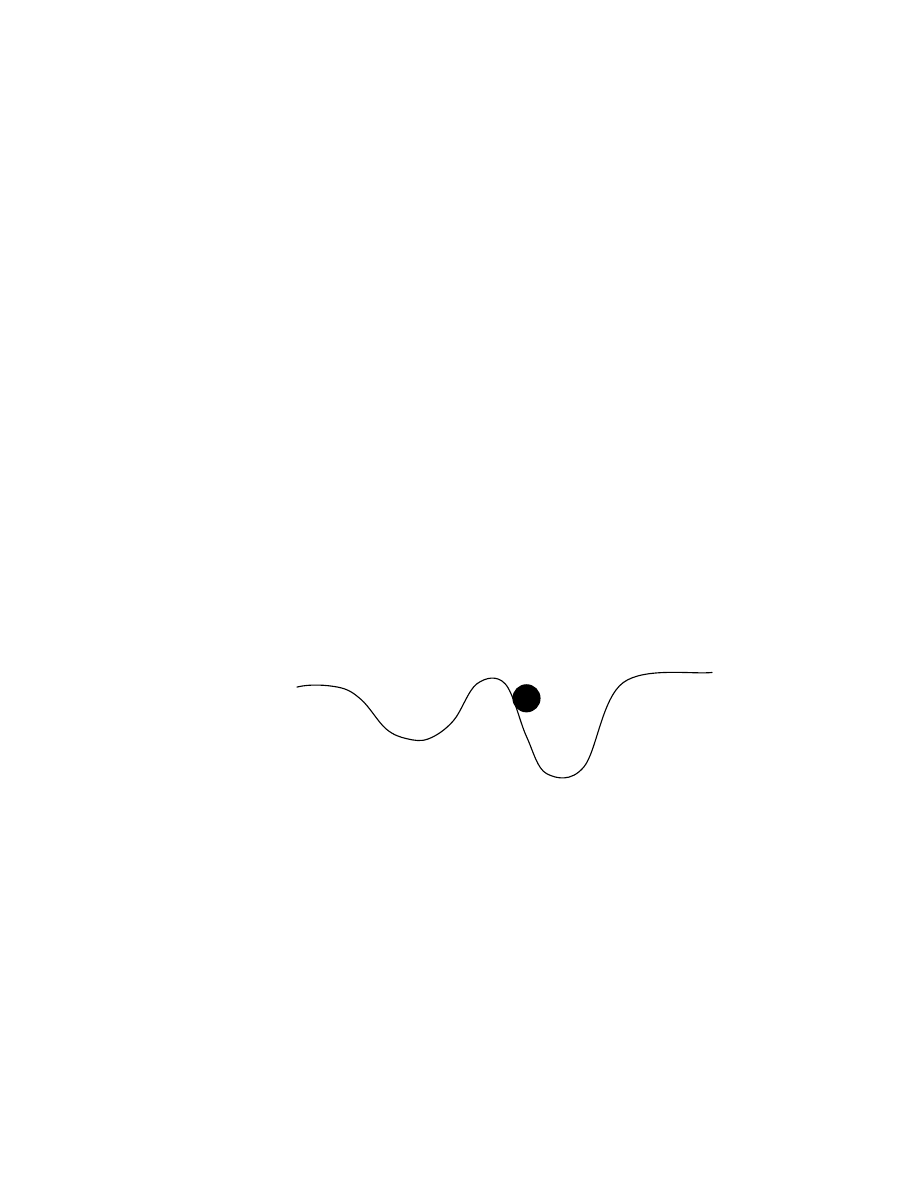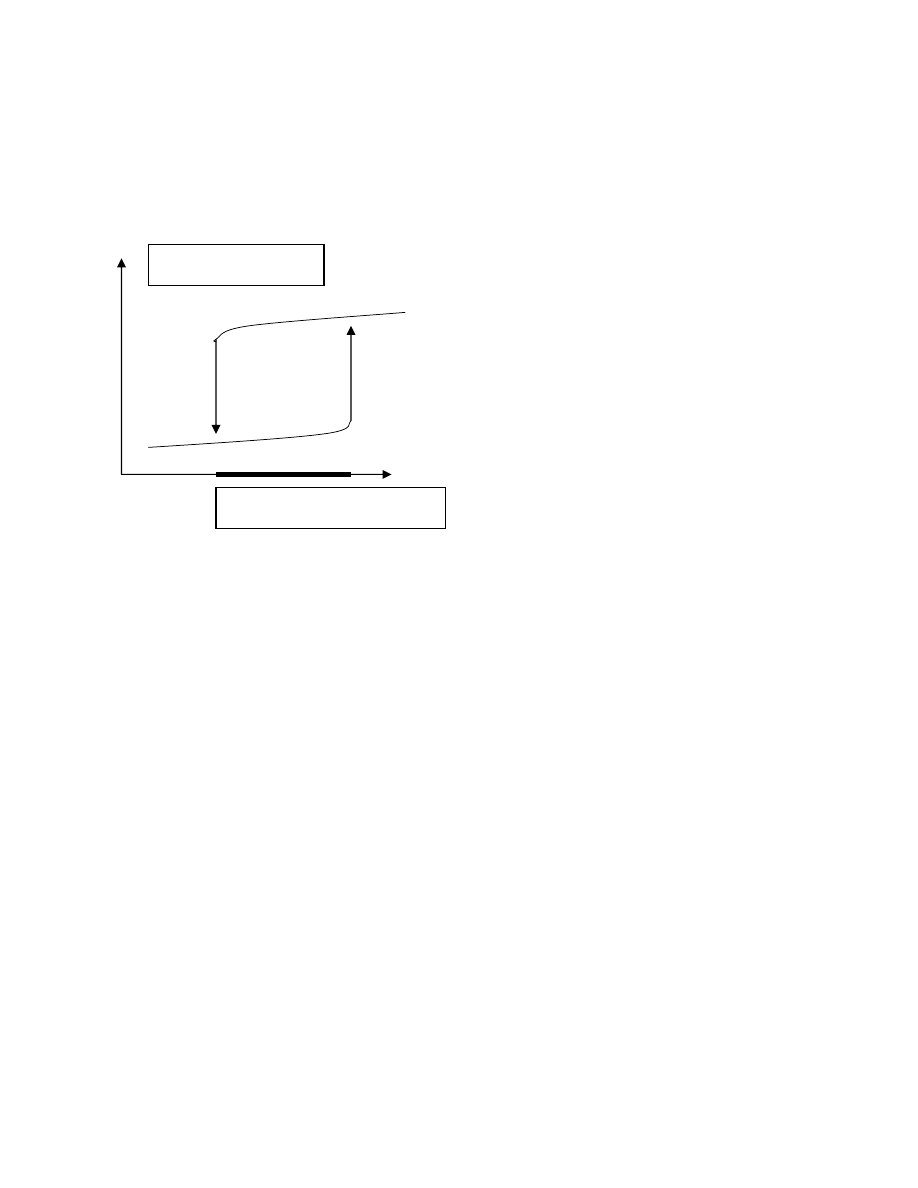
Running head: DYNAMICAL MODEL OF INTRACTABLE CONFLICT
Intractable Conflict as an Attractor:
Presenting a Dynamical Model of Conflict, Escalation, and Intractability
Peter T. Coleman
Teachers College, Columbia University, USA
Robin Vallacher
Florida Atlantic University, USA
Andrzej Nowak
University of Warsaw, Poland
Lan Bue Ngoc
University of Warsaw, Poland
All authors contributed equally to this article. Correspondence concerning this article
should be sent to Peter T. Coleman at the following address: Box 53, Teachers College,
Columbia University, 525 West 120
th
St., New York, NY 10027, Phone: (212) 678-3112,
Fax: (212) 678-4048. Electronic mail may be sent to Peter T. Coleman at

Dynamical Model of Intractable Conflict 2
Abstract
Decades of research on social conflict has contributed to our understanding of a variety of
key psychological, social, and community-based aspects of conflict escalation and
intractability. However, the field has yet to put forth a formal theoretical model that links
these components to the basic underlying mechanisms that account for intractability and
transformation. This paper presents such a model: a dynamical-systems model of
intractable conflict. We propose that it is particularly useful to conceptualize ongoing,
destructive patterns of intractable conflict as strong attractors: a particular form of self-
organization of multiple elements of conflict systems, including psychological, social,
and community-level factors. Our dynamical model of conflict intractability is specified,
and some preliminary implications of this approach for conflict de-escalation are
discussed.

Dynamical Model of Intractable Conflict 3
Intractable Conflict as an Attractor:
Presenting a Dynamical Model of Conflict, Escalation, and Intractability
Protracted social conflicts, such as those in the communities of the Middle East,
Cyprus, and the Congo, are profoundly disheartening. Opportunities and initiatives for
peace and stability occasionally come and go in these settings, but their general patterns
of malignancy remain steady. And while kindling a sense of hope, these opportunities,
when they collapse, contribute to an increasing sense of futility amongst stakeholders,
which fuels a conflict’s intractability.
Inherent to this cycle of hope and hopelessness is a basic paradox of intractable
conflicts: they are essentially stable despite tremendous volatility and change. If we
consider the conflict in the Middle East for example, it appears by most accounts
intransigent; with a past, present, and future cloaked in hate, violence, and despair. Yet,
over the years we have also seen major changes in important aspects of the conflict such
as in leadership, policies, regional circumstances, intensification and de-escalation of
violence, intragroup divisions, popular sentiment, and international intervention
strategies. In other words, we have seen extraordinary changes occur within a context of a
pattern of stable destructive relations. This paradox of stability and change is evident in
intractable conflicts at all levels, from estranged siblings and neighbors to warring
ethnopolitical factions. They are at once frozen, unyielding, often persisting in hostile
states for generations, yet they are also some of the most volatile and dynamic social
processes on earth. And, oddly, it is often this dynamism itself, this mercurial shifting of
role-players, concerns, attitudes, and strategies, which makes these conflicts so complex
and so difficult to contain and resolve.

Dynamical Model of Intractable Conflict 4
We argue that the phenomenon of intractability through dynamism can be
fruitfully addressed from the perspective of dynamical systems. This perspective is
explicitly concerned with how the organization of a system is related to the system’s
behavior. Given the multitude of forces acting on any situation of protracted conflict, we
would expect to see a myriad of different actions and reactions within the context of the
conflict. Instead, we typically see a strong, finite set of responses that are consistent. In
dynamical systems terms, these are known as attractors. As conflicts escalate, there are
fundamental changes in key psychological, social, and community-based factors, and
changes in the way in which these factors are inter-linked, resulting in a qualitative
change in the character of the conflict. With intractable conflicts, we see the emergence
of strong, stable attractors (patterns of thinking, feeling, and acting), which pull all
thoughts, feelings, actions, norms, etc., toward a negative, destructive state that becomes
self-organizing and self-perpetuating.
The principles defining the evolution of a dynamical system have wide generality
and have been employed to conceptualize and investigate highly diverse phenomena in
many areas of science (cf. Johnson, 2001; Schuster, 1984; Strogatz, 2003; Weisbuch,
1992). Recent years have witnessed the ascendance of the dynamical perspective in the
psychological and social sciences as well (cf. Holland, 1995; Nowak & Vallacher, 1998;
Vallacher, Read, & Nowak, 2002). Basic dynamic properties have been identified for
such personal and interpersonal phenomena as emotion (e.g., Thagard & Nerb, 2002;
Vallacher & Nowak, 1999), self-concept (e.g., Nowak, Vallacher, Tesser, & Borkowski,
2000; Vallacher, Nowak, Froehlich, & Rockloff, 2002), attitude change (e.g., Kaplowitz
& Fink, 1992; Latané & Nowak, 1994), social judgment (e.g., Read & Miller, 1998;

Dynamical Model of Intractable Conflict 5
Smith, 1996; Vallacher, Nowak, & Kaufman, 1994), stereotyping (e.g., Queller, 2002),
social interaction (e.g., Nowak, Vallacher, & Zochowski, 2002), cooperation versus
competition in social dilemmas (e.g., Messick & Liebrand, 1995), group dynamics (e.g.,
Arrow, 1997; Nowak, Szamrej, & Latané, 1990), and social change (e.g., Nowak &
Vallacher, 2001). Each of these phenomena is highly relevant to issues of conflict, but to
date an explicit dynamical account of this topic has yet to be articulated and tested.
This paper presents a dynamical model of intractable conflict. We begin by
outlining the core components of conflict escalation and intractability. We then describe
the basic features of dynamical systems as they relate to the development and
maintenance of malignant conflict in interpersonal and social systems. We propose that it
is particularly useful to conceptualize ongoing, destructive patterns of conflict as strong
attractors: a particular form of self-organization of multiple elements of a conflict system.
Because dynamical properties are couched in formal terms, they are manifest in much the
same way in different phenomena and at different levels of personal and social reality.
Thus, intractability can be understood with recourse to the same basic mechanisms
whether the focus is intra-individual dynamics, interpersonal relations, or inter-group
contact. Moreover, the dynamical account specifies how the phenomena at these different
levels are themselves interlinked dynamically, forming a larger dynamical system with
nested components. Our dynamical model of conflict intractability will be specified, and
the preliminary implications of this approach will be discussed.
Conflict Intractability
Intractable conflicts are essentially conflicts which persist because they seem
impossible to resolve. Most don’t begin as intractable, but become so as escalation,

Dynamical Model of Intractable Conflict 6
hostile interactions, sentiment, and time change the quality of the conflict.
triggered and emerge from a wide variety of factors and events, but often involve
important issues such as moral and identity differences, high-stakes resources, and/or
struggles for power and self-determination (Burgess & Burgess, 1995; Gurr, 1996).
Intractable conflicts are often long-lasting, associated with cycles of high and low
intensity and destructiveness, are particularly resistant to resolution, and become
pervasive; affecting even mundane aspects of disputants’ lives (Coleman, 2003;
Kriesberg, 1999).
Although every situation of intractable conflict is unique and involves important
historical, cultural, political, social, and psychological differences, the phenomenon of
intractability can be described generally. It involves the basic elements of conflict,
escalation, transformation, and maintenance (see Pruitt & Kim, 2004 for a detailed
discussion), which are fundamental to intractability at any level of conflict (husband-
wife, family, community, intra and interstate). Below, we outline these four components
of intractable conflicts.
Conflict
We
define
conflict as the perception of incompatible activities (goals, claims,
beliefs, values, wishes, actions, feelings, etc.). An incompatible activity “prevents,
obstructs, interferes, injures” or in some way makes less likely or less effective another
activity (Deutsch, 1973, p. 10). When an incompatible activity is perceived, we actively
interpret its meaning through pre-existing cognitive structures (beliefs, attitudes,
stereotypes, etc.), through a consideration of the context of the activity (occurring in the
1
Some issues, however, such as the abortion conflict in the U.S., are considered irresolvable in the
conventional sense (see Pearce & Littlejohn, 1997; Coleman, 2003). Nevertheless, issues will differ by
person and situation in their degree of intractability.

Dynamical Model of Intractable Conflict 7
context of a long friendship or between enemies), and by way of certain mediums or
processes (such as direct perceptions vs. second-hand reports or rumors; see Brunswick,
1956). At any point in this process of perception and interpretation, conflicts can begin to
be seen as more or less important, threatening, expansive, and intractable. For example,
Ariel Sharon’s visit to the Temple Mount in Jerusalem in 2000 was seen as a frivolous
gesture to some, and as a flagrant attack on Islam to others. The interpretation of this
activity, regardless of Sharon’s real or stated intentions, was significantly affected by the
perceiver’s psychological schema for the conflict, social interactions with peers, the
medium through which they learned of the event (The New York Times or Al Jazeera),
and by the contextualization of the event within their own or their group’s understanding
of the conflict.
Escalation
When a conflict is interpreted as negative, intentional, and unjustified, the
perceiver’s motivation to respond increases. Their response can take many forms, from
avoidance or flight to reciprocation or escalation. Escalation is defined as an increase in
the felt intensity of a conflict or the use of heavier tactics by one or more of the
participants than had been used previously in the conflict (Pruitt & Kim, 2004). There are
a variety of conditions which are conducive to escalatory responses to conflict, including
periods of rapidly expanding achievement for members of formerly oppressed groups,
situations where access to fair methods of recourse are blocked, ambiguity over the
relative power between participants, and anarchic social situations where previous
constraints on contentiousness and violence are absent (Deutsch, 1973; Gurr, 1996).
Escalation is also more likely when the parties share a history of antagonism, view the

Dynamical Model of Intractable Conflict 8
conflict as win-lose, and when the conflict is thought to threaten central values or critical
resources (Fisher, 1991). Typically, as one participant escalates tactics, it is reciprocated
by others in a “tit-for-tat” fashion, resulting in vicious escalatory spirals and an overall
intensification of the conflict. This typically results in the broadening of the scope of the
conflict (an increase in the number and size of the issues), the use of ever heavier tactics,
and the involvement of more participants (Deutsch, 1973).
Transformation
As conflict escalates, and the intensity of conflict crosses certain thresholds,
important psychological, social, and community-based changes occur. These changes are
central to our understanding of intractability, as they are both the result of escalation and
the sources of further escalation. Research on conflict has identified a multitude of such
changes (Fisher & Keashly, 1991). Here, we identify a few of the more central factors.
Psychological Changes. With conflict intensification, we see a shift in motives
from doing well or problem-solving to reducing loss or, eventually, to harming the other
as much as possible (Pruitt & Kim, 2004). Accordingly, attention moves from substantive
concerns to survival concerns (Fisher & Keashley, 1991). This results in an increase in
commitment to the conflict, where the participants see no way of extricating themselves
without becoming vulnerable to an unacceptable loss in a value central to their self-
esteem or survival (Deutsch, 1985). As stress and anxiety increase, cognitive functioning
becomes impaired, with an increase in overly simplistic, rigid, black-and-white
perceiving and thinking (Osgood, 1983). This can fuel processes of dehumanization of
the enemy, leading to moral disengagement (Bandura, 1982) and moral exclusion of
members of outgroups (Opotow, 1990). Accordingly, we see a decrease in emotions such

Dynamical Model of Intractable Conflict 9
as empathy for the other and guilt and personal responsibility for the hostilities, and an
increase in feelings such as humiliation, loss, anger, blame, hate, and fear (Lindner, 2002;
Rothman, 1997). We also see to see a shift in behavioral tactics from more conciliatory
initiatives to more hard-line, coercive devices resulting in escalatory spirals that can take
on a life of their own and lead to outcomes of mutual loss, death, trauma, and other forms
of irreparable harm (Agger, 1994; Deutsch, 2003).
Any one of these changes in the psychological state of participants to a conflict
can have adverse effects on the dynamics of the relationship and on the nature and
intensity of the conflict. However, as the conflict escalates, we also see the character of
the relations between these distinct motivational, cognitive, affective, and behavioral
elements changing; becoming more interdependent and positively correlated so that they
begin to trigger and mutually reinforce each other (D. Pruitt & Olczak, 1995).
Social and Group-based Changes. As conflicts intensify, the quality of
communications between the disputants transforms from direct discussions and
negotiations to autistic hostilities where communication is non-existent except through
direct attacks (Fisher & Keashly, 1991). In addition, loosely knit, politically inactive sets
of individuals develop into well-organized conflict groups that become capable of
challenging the perceived threat (Azar, 1990, Coleman, 1957, Gurr, 1996, (Simon &
Klandermans, 2001). As a result, strong norms develop supporting a contentious
approach to the conflict (Raven & Rubin, 1983). In addition, a variety of changes occur
in the collective identities of the participants, including a convergence toward monolithic
identities where all dimensions of a group’s identity – such as ethnicity, religion and
language – tend to be viewed as highly correlated (Kelman, 1999), and fictive kinships

Dynamical Model of Intractable Conflict 10
develop which emphasize ingroup loyalty and negatively sanction behaviors and attitudes
at odds with group conformity (Fordham & Ogbu, 1986). As group goals for defeating
the enemy become central to the group, subgroups form to achieve such goals, and
militant leaders rise in status and have increasing levels of influence on group planning
and action (D. G. Pruitt & Kim, 2004). At times, extremist factions develop goals
contrary to those of the group and splinter-off into autonomous groups who oppose both
the original outgroup and their prior ingroup. These changes are supported by shifts in
ingroup narratives which provide a justification for the conflict and an account of the
group’s origin, history, and relationship to its rights and claims (Bar-Tal, 2000; Kelman,
1999) (Eidelson & Eidelson, 2003).
As with psychological changes, the various social or group-based changes that
occur tend to align with escalation, especially when protracted, so that group goals,
norms, structures, identities, and worldviews become increasingly consistent and
coherent within groups, and oppositional or incommensurate between groups (Kelman,
2001).
Community-based Changes. When subgroups within a community are drawn into
a destructive conflict against one another, more neutral community members begin to
align themselves with one side or another, dividing the community and severing
cooperative bonds that had previously existed between more neutral members of the
community (Coleman, 1957). These divisions foster and are fostered by exclusive social
structures – including ethnically segregated business associations, trade unions,
professional groups, political parties, and sports clubs – that limit intergroup contact and
isolate the ingroup across family, work, and community domains (Deutsch, 1973; LeVine

Dynamical Model of Intractable Conflict 11
& Campbell, 1972; Varshney, 2002). Finally, as conflicts persist, they exacerbate pre-
existing community problems (such as poverty, unemployment, and poor access to
healthcare, nutritional meals, decent housing, etc.) and inflict new harms (destruction of
roads, schools, telephone systems, hospitals, farmland, etc.). These hardships lead to
increased chaos and confusion, and to a greater sense of deprivation and resentment,
which often leads to an increase in crime and/or political violence (Gurr, 1970).
Maintenance Mechanisms
As the various psychological, group, and community elements change and align,
they establish psychological orientations, a state of intergroup relations, and a context
that are highly threatening, destructive, and antagonistic, despite periodic perturbations in
the levels of intensity of the conflict. In some cases, these malignant states endure and are
maintained by a host of mechanisms at different levels. These mechanisms are
paradoxical; they are typically automatic or logical responses to threatening
circumstances or trauma, which serve short-term concerns, but which also contribute to a
perpetuation of the long-term malignant state of affairs. In other words, they emerge in
response to threat and anxiety, but contribute to the conditions which maintain or elevate
threat and anxiety. Thus, they are key to understanding the self-sustaining nature of many
protracted social conflicts. These mechanisms include:
Psychological Mechanisms. As an individual’s psychological orientation
organizes into a strong conflict schema (what a conflict is and how it should be dealt
with), his/her motives, beliefs, attitudes, feelings, moral outlook, and actions become
more consistent and mutually reinforcing (D. Pruitt & Olczak, 1995; Shoda, LeeTiernan,
& Mischel, 2002). This coherence in psychological structure is reinforced by a number of

Dynamical Model of Intractable Conflict 12
automatic psychological mechanisms including self-fulfilling prophecies (when negative
attitudes and perceptions impact the other and elicit confirmatory behavior),
rationalization of behavior, and selective information processing (discovery of
confirming evidence, self-serving evaluations, and a variety of attributional distortions;
Pruitt & Kim, 2004). Thus the perceiver automatically elicits, selects, and processes
biased information that reinforces his/her existing schema and goals. This reinforcement
contributes to a high degree of psychological (as well as political and economic)
investment in waging a contentious strategy in the conflict, leading to entrapment, a state
where one’s prior investment in a conflict drives one’s need to remain engaged in the
conflict .
Group Mechanisms. As social groups divide, polarize, segregate, and splinter we
see the convergence of collective beliefs, attitudes, and norms amongst group members,
which serve to support and protect the ingroup and vilify and provide distance from
outgroups. Here, the stability of such ingroup-outgroup divides are reinforced by a
variety of group-level mechanisms such as intragroup socialization and sanctioning of
appropriate feelings, thoughts, and behaviors (Fordham & Ogbu, 1986); collective
rumination of insults and injustices inflicted by outgroups (Coleman & Goldman, 2004);
social construction and dissemination of outgroup enemy images (Stein, 2001; Toscano,
1998), myths regarding the utility and nobility of the ingroup’s use of violence (Orr, Sagi,
& Bar-On, 2000); and modeling of contentious behaviors aimed at the protection of
ingroup members and ingroup honor (Nisbett & Cohen, 1996). These mechanisms,
although responsive to legitimate concerns, intensify the pressure for social conformity
within groups, and exacerbate the perception of threat from outgroups.

Dynamical Model of Intractable Conflict 13
Community Mechanisms. At the broader community-level, we see another layer
of mechanisms that maintain deeply-divided communities and contribute to the
splintering-off of extremist groups. These include top-down control of dissent and
delegitimization of information that might challenge or destabilize the status quo of the
conflict (see Chomsky, 2002); political and economic investments in intergroup conflicts
that defray constituent attention from intragroup problems and tensions (Starr, 1999); and
destruction of cross-cutting institutions and building of segmentary institutions (trade
associations, sports clubs, places of worship, etc.) that support the divide (Varshney,
2002). Thus, we see a layering and accumulation of these short-term-functional
mechanisms at the individual, group, and community levels that maintain psychological
and group coherence, yet sustain intergroup hostilities in a malignant state.
To summarize, when perceptions of incompatibility (conflict) are interpreted as
sufficiently negative, intentional, and unjustified, they can lead to reactions and response
patterns of increasing levels of intensity (escalation). Over time, such interaction patterns
trigger psychological, group, and community-level changes that become increasingly
aligned, and then maintained by mechanisms at multiple levels. This can result in
malignant social processes that the disputants see as irreversible and within which they
feel entrapped. In this state, many of the constructive forces and connections which are
inherent to any community system (networks of effective action) become taxed,
obstructed, or destroyed, constraining their capacities to ameliorate the conflict. This
results in a state we define as intractable.
Decades of research on conflict and related social phenomena have contributed to
our understanding of the four components of intractability: conflict, escalation,

Dynamical Model of Intractable Conflict 14
transformation, and maintenance mechanisms. However, the field has yet to put forth a
formal theoretical model that links these four components to the basic underlying
mechanisms that account for intractability and provide inroads for sustainable change.
Such a model will allow us to move beyond a characterization of a given conflict system
in its current state, to an understanding of the system’s latent potentialities for alternative
states. In the following section, we specify this model.
Dynamical Model of Conflict
Every conflict is unique in a number of respects. The specific issues, the parties
involved, and the cultural and historical context vary enormously from one conflict to
another. The specific mechanisms, too, vary widely from one type of conflict to another.
From a dynamical perspective, however, such mechanisms function as interdependent
elements of a larger system with dynamical properties that result in the escalation and
maintenance of the conflict. Once a conflict has become malignant, change in any
specific issue—even resolution of the issue that initially instigated the conflict—is
unlikely to terminate or even dampen the conflict. What remains constant and functions
to perpetuate the conflict are the dynamics defining the relations between psychological
and social mechanisms within and between individuals and groups. The goal is no longer
to solve an issue, but rather to survive and cause harm to the other party. Once the parties
to conflict have developed a stable way of thinking about and behaving toward one
another, in other words, the problem no longer revolves around issues per se but rather
centers on the mental and behavioral patterns defining the relationships and institutions
which constitute the context of the conflict.

Dynamical Model of Intractable Conflict 15
Intractable Conflict as an Attractor
The maintenance of a narrow range of thoughts, feelings, and actions despite the
introduction of new ideas and action possibilities suggests that intractable conflict can be
described as an attractor for these mental and behavioral phenomena. The concept of
attractor is similar to the notion of equilibrium. Roughly speaking, it is a state or a
reliable pattern of changes (e.g., periodic oscillation) toward which a dynamical system
evolves over time, and to which the system returns after it has been perturbed. A person
or group may encounter a wide range of ideas and learn of alternative action scenarios,
for example, but over time only those ideas and actions that are consistent with
destructive conflict are embraced as relevant and credible. Attractors, in short, channel
mental and behavioral experience into a narrow range of malignant (but coherent) states.
Attempting to move the system out of its attractor promotes forces that reinstate the
system at its attractor. This means that attempts to change the state of conflict without
changing the mechanisms that continually reinstate the conflict are likely to be futile,
resulting only in short-term changes. To promote lasting change, it is necessary to
change the attractor states of the system. This is no easy feat, since it is tantamount to
changing the mechanisms responsible for the system’s dynamics.
The dynamical depiction of conflict attributes intractability to the organization of
elements rather than to the specific value or nature of individual elements. Building trust
between groups, for example, is a noble goal and may be a necessary step in the
resolution of inter-group conflict, but in light of our description this step is unlikely to be
successful. Even if trust is somehow established between members of conflicting groups,
the influence of other linked features is likely to disrupt the trust and reinstate the

Dynamical Model of Intractable Conflict 16
conflict. In intractable conflict, multiple interlinked forces establish an equilibrium that
pulls the respective parties into a state of conflict. Successful intervention, from this
perspective, should not aim at pushing the person or group out of its equilibrium, but
rather changing the social system in such a way that the equilibrium among forces is
changed. Once an equilibrium corresponding to intractable conflict is weakened and a
new equilibrium is established that maintains positive relations among groups, a
permanent change in the structure is achieved rather than simply a momentary diminution
of the intensity of the conflict.
A simple metaphor is useful in capturing the essence of the attractor concept and
the relevance of attractors for intractable conflict. Imagine a ball on a hilly landscape, as
portrayed in Figure 1. The ball, which represents the state of the system, will roll down a
hill and come to rest at the bottom of a valley. The valley serves as an attractor for the
system.
A
B
Figure 1. A dynamical system with two attractors (A and B)
The figure illustrates that a system may have more than one attractor—in this
case, two—and that the attractors can be described in terms of two basic properties. Each
attractor, first of all, is associated with a basin of attraction—that is, a set of states that are
“attracted” by (i.e., will evolve toward) the attractor. Note that the basin of attraction for
Attractor A is somewhat wider than the basin of attraction for Attractor B. This simply

Dynamical Model of Intractable Conflict 17
means that a wider variety of states will evolve toward Attractor A than toward Attractor
B. Second, attractors can vary in their relative strength, which is portrayed as the relative
depth of the two valleys in the figure. Attractor B is thus a stronger attractor than
Attractor A. This means that once a system is at this attractor, it is difficult for it to be
dislodged, even when perturbed by strong external influences. It would thus take a
stronger force to dislodge the system from Attractor B than from Attractor A.
These two properties have clear relevance for the intractability of conflict. The
wider the basin of attraction, first of all, the greater the range of ideas and action
possibilities that eventually evolve toward the dominant mental and behavioral pattern
characterizing the parties to the conflict. Even positive information that seemingly
contradicts the predominant negative view of another person or group is likely to be
transformed by a variety of cognitive mechanisms until it fits the predominant view.
Similarly, a peaceful overture or gesture that might initially be taken at face value will
subsequently become reframed until it provides evidence in support of, rather than in
opposition to, the predominant response tendency of the person or group.
The depth of an attractor, meanwhile, provides an index of how difficult it is to
transform the malignant tendencies of an intractable conflict. When destructive conflict
is a deep attractor (as in Attractor B) for an individual, interpersonal, or social system, an
attempt to resolve the conflict is much like trying to push the ball uphill in Figure 1. As
soon as the pushing force is relaxed, the ball will roll back to the attractor (the bottom of
the valley). Logically and vigorously pointing out the non-productive nature of a
person’s hostile attitudes toward someone else, for instance, may succeed in achieving a
few temporary concessions—in effect, pushing the ball up the hill a little—but eventually

Dynamical Model of Intractable Conflict 18
will prove counter-productive as the forces restoring the attitude overwhelm the
persuasive appeal—much like gravity eventually proves too much for muscle power.
Note that if there is sufficient force to dislodge the system from its attractor (e.g.,
A in Figure 1), the system will gravitate in short order to another attractor (e.g., B),
provided there is one available. In a system characterized by more than one attractor,
then, the mental, affective, and behavioral states sort themselves categorically, so that if
change does occur, it does so in a qualitative (nonlinear) rather than incremental (linear)
fashion (cf. Latané & Nowak, 1994).
The behavior of the system in which two fixed-point attractors co-exist can be
described in terms of catastrophe theory (cf. Thom, 1975). Catastrophe theory describes
how small incremental changes in some variables can result in large qualitative changes
in some other variables. The basic scenario can be described in terms of the relationship
among three variables. One of them, the splitting factor, determines the form of the
relationship between the other two. The other two factors correspond to the distinction
between independent and dependent variable. In the dynamical model, the intensity of
the conflict can be considered the dependent variable, whereas the forces promoting the
conflict (e.g., conflict of interest, aggravating circumstances) can be considered the
independent variable. The splitting factor, meanwhile, corresponds to the degree to
which the issues are linked by positive feedback loops. At low levels of the splitting
factor (i.e., multi-dimensionality in issues), there is a linear (e.g., monotonic) relationship
between the independent and dependent variables (i.e., forces and intensity of conflict).
At high levels of the splitting factor (i.e., high positive linkage among the issues),

Dynamical Model of Intractable Conflict 19
however, the relationship between the independent and dependent variables assumes the
form depicted in Figure 2.
Figure 2. Catastrophe of Conflict
Hysteresis
Intensity of conflict
Forces promoting conflict
In Figure 2, as the forces promoting conflict grow, the intensity of the conflict
increases at a relatively slow rate until it reaches a threshold, after which the intensity
shows a catastrophic change (i.e., moving to the top line). Once the conflict has reached
a high level of intensity, decreasing the forces will not reduce the intensity to its original
level—until another threshold is reached that represents a considerably lower level of
forces. The region of hysteresis in Figure 2 shows that the same level of forces is
associated with either very low or very high conflict intensity. Which level is observed
depends on the history of the conflict. If the conflict has not yet crossed the critical
threshold, the intensity associated with a force in the region of hysteresis is likely to be
low. If, however, the conflict has crossed the critical threshold, the intensity associated
with a force in the hysteresis region is likely to be high. The stronger the coupling of the
issues, the larger the region of hysteresis. In essence, once a conflict has crossed a

Dynamical Model of Intractable Conflict 20
certain threshold, diminishing the forces that initially promoted the conflict is likely to be
ineffective in reducing the level of conflict.
The catastrophic nature of conflict has recently been demonstrated in a school
setting by Bue Ngoc (2005). In conditions promoting a predominance of positive
feedback loops (i.e., strong interpersonal ties), a person experiencing antagonistic
behavior from another person either chooses to ignore the attack, responding instead in a
relatively mild fashion, or, after a critical threshold of antagonism is reached, responds in
a confrontational manner. The transition from one type of response to the other was
abrupt and did not involve a transition through intermediate levels. However, in
conditions more likely to involve less linkage among cognitive and affective mechanisms
(i.e., weak interpersonal ties), there was a linear relationship between antagonistic
behavior from another person and the person’s antagonistic response. In effect, the
person responded in a proportional manner to antagonistic actions directed toward him or
her, and the escalation and de-escalation of conflict intensity conformed to similar
functional relationships.
Self-Organization and the Emergence of Attractors
The key to intractable conflict is the formation and maintenance of an attractor
that stabilizes malignant dynamics within and between individuals and groups. This
means that the solution to intractable conflict involves disassembling the malignant
attractor or moving the system into the basin of a different, more benign attractor
(provided one exists or can be established). Before one can hope to accomplish these
goals, however, it is imperative to understand how and why attractors form in the first
place. The general answer is that attractors develop in systems in which the state of each

Dynamical Model of Intractable Conflict 21
element depends on, and is influenced by, the state of other elements. As the links
between elements become stronger, the system loses degrees of freedom since the state of
each element can be predicted by the state of other elements. In such systems, the state
of a single element cannot be adjusted independently of other elements. Even if an
external force changes the state of a given element, so that it is no longer coherent with
the state of other elements, the joint influence of the other elements will reinstate the
original value of the changed element.
Multiple influences between elements may lead to the emergence of ordered
structures on the global level. If emergence of order occurs because of the interactions
among system elements rather than because of the intervention of higher-order agents,
the process is referred as self-organization. Consider, for example, the genesis of order
in flocks of birds. If each bird simply maintains a particular angle with respect to the bird
in front of it, an overall inverted-V structure will form without anyone dictating this
formation. The emergence of order via self-organization has been observed in human
groups as well. Nowak et al. (1990), for example, demonstrated that simple rules of
social interaction with one’s immediate neighbors promote the emergence of local
clusters of like-minded individuals. Such clusters form even if the initial spatial
configuration of opinions is random. Attractors for the system in this case conform to
clustered solutions. If an individual within a cluster changes his or her opinion (e.g., due
to outside influence), other members of the cluster will exert influence to bring him or her
back into the fold.
From this perspective, conflict progresses toward intractability as the elements
relevant to the conflict self-organize into a structure, such that the elements no longer

Dynamical Model of Intractable Conflict 22
function independently, but rather are linked by positive feedback loops. A positive
feedback loop means that the activation of each element increases the activation of other
elements. Clearly, positive feedback loops are present in every system and are not
limited to conflict. Positive feedback loops bind together elements that are necessary for
efficient action and thus are critical for action initiation and maintenance. Considerable
theory and research, however, have established the importance of negative as well as
positive feedback loops in the regulation of biological and social systems. A negative
feedback loop means that the activation of an element decreases the activation of other
elements to which it is linked. Negative feedback loops dampen system dynamics and
thus can constrain or stop the action tendencies engendered by the positive feedback
loops. A balance between positive and negative feedback loops, then, is critical for
effective self-regulation (cf. Carver & Scheier, 1999; Powers, 1973) and social regulation
(Morgan, 1997).
With respect to conflict, positive feedback loops may be crucial for the
construction of an efficient response to a perceived confrontation. Once a conflict is
engaged, however, negative feedback loops are essential for de-escalation. Thus, as long
as a system is characterized by negative feedback loops, control mechanisms are
available for mitigating and terminating conflict, allowing situations of conflict to be
temporary and constructive rather than destructive. In most situations, there are limits to
the escalation of conflict, and there is potential for de-escalation and healing. Even in an
intense physical confrontation, signs of damage to one of the combatants may halt further
violence on the part of the other combatant. Similarly, in verbal arguments the tears of
one person can usually stop the aggression and introduce remorse mechanisms.

Dynamical Model of Intractable Conflict 23
The Collapse of Multi-Dimensionality
In everyday life, a variety of separate mechanisms regulate thought and behavior
within and between individuals and social groups. This is true as well for interpersonal
and inter-group relations involving conflict. Thus, many conflicts are confined to
specific issues, so that for the respective interpersonal or social system there are likely to
be a host of issues for which conflict does not exist. Each conflict may be solved
independently of other issues, often in a constructive manner that contributes to
relationship maintenance and growth. In effect, each issue can be characterized as an
independent dimension of the relationship. The mechanisms operating on different issues
may even operate in a compensatory manner, so that intensification of conflict on one
issue may promote conciliation on other issues in the interest of maintaining the overall
nature of the relationship. In a healthy intimate relationship, for instance, when conflict
arises with respect to one issue, the potential threat it poses for the relationship may be
compensated by extra positivity with respect to other issues. Interpersonal and inter-
group relations can thus be described as complex and multi-dimensional, with the various
mechanisms operating at different points in time, in different contexts, with respect to
different issues, and often in a compensatory manner.
Conflict escalates with a potential for intractability when features that are
independent or normally work in opposition to one another become aligned and work in a
mutually reinforcing manner. Relatively benign multiple conflicts may become self-
organized, in other words, and the resultant collapse of multi-dimensionality can promote
a recalcitrant structure of intractable conflict. Self-organization occurs when positive
feedback loops develop between the various features of the conflict, so that conflict with

Dynamical Model of Intractable Conflict 24
respect to each feature reinforces the conflict with respect to the other features. The
collapse of multi-dimensionality has two basic forms. First, positive feedback loops may
develop that bind various elements—issues, features, individuals—into a simple
structure. Second, negative feedback loops may cease to exist or become reversed so that
they function as positive feedback loops, fueling rather than inhibiting the potential for
destructive conflict. When tears augment rather than inhibit aggression, for example, the
conflict between individuals may escalate without control and become highly destructive.
The collapse of multi-dimensionality into a simpler structure not only promotes
the escalation of conflict, it also provides a mechanism for the stabilization of the
conflict. Even if the original issue that generated the conflict loses its salience or is
resolved, the conflict is likely to be sustained by positive feedback involving the other
issues. In fact, the expression of agreement by one party with respect to a single issue
might result in compensatory conflict on other issues in order to maintain coherence in
the interpersonal conflict. The thought that one’s enemy might adopt one’s political
preferences or become desirable in some fashion, for example, can promote distress and
prompt enhanced conflict on other issues.
Imagine, for example, learning that your enemy has similar political views or has
provided assistance to a family member. Prior to forming interpersonal conflict across
multiple issues, this is precisely the sort of event that would alleviate the potential
interpersonal conflict. Once the interpersonal conflict has crossed a certain threshold
involving correlated issues, however, such information violates one’s sense of coherence
and is likely either to be rejected, redefined in cynical terms, or compensated for by
enhancing conflict with respect to other issues. In other words, once the

Dynamical Model of Intractable Conflict 25
multidimensionality of an interpersonal relation has collapsed, the simplicity of the one-
dimensional system does not allow for representations of conflicting characteristics. The
signature characteristic of a conflict that has become organized across issues is the
negative reaction to what would otherwise be a conflict-reducing development. In this
stage, the goal has transformed, such that conflict no longer centers on the issues, but
rather on protecting oneself and harming the other party.
The collapse of multi-dimensionality associated with intractable conflict goes
beyond the links between issues to include links within an issue. This is especially
apparent in the confluence of cognitive and affective mechanisms. Normally, people can
use one component to mitigate the influence of the other. Experiencing harm to a family
member at the hands of someone else, for example, is likely to cause heightened negative
affect towards the perpetrator, but the cognitive system may center on the perpetrator’s
lack of bad intentions. Likewise, a rational decision to punish someone may be at odds
with one’s empathy for the transgressor. When cognitive and affective mechanisms
develop a reinforcing rather than compensatory relation, however, there is clear potential
for escalation in intensity of a conflict. Such escalation may result in a shift in behavioral
tactics, from relatively benign or conciliatory actions to far more hard line and aggressive
actions. Harm to a family member could lead to a strong retaliatory response, for
example, when cognition and affect are linked only by a positive feedback loop. In the
extreme, this process could promote dehumanization of one’s opponent, such that moral
norms no longer apply to one’s behavior directed to him or her. Accordingly, emotions
such as empathy and guilt may be diminished, whereas feelings of humiliation, anger,
hate, and fear may be enhanced, as discussed earlier.

Dynamical Model of Intractable Conflict 26
Feedback among Levels of Social Reality
The escalation and maintenance of conflict is manifest at different levels of
psychological and social reality: the thoughts, feelings, and actions of specific
individuals, the dynamics of interpersonal relations, and the relations within and between
social groups and nations. Moreover, in intractable conflict, these levels tend to become
interlinked, so that mechanisms at one level stimulate conflict at other levels. The
structure of conflict is thus maintained not only by positive feedback loops among
features at a given level, but also by positive feedback between levels. This means that
conflict launched at one level is likely to recruit other levels as well. Conflict that began
at an inter-group level, for instance, is likely to spawn and maintain the beliefs, emotions,
and actions of individuals in their interpersonal relations. The reciprocal feedback loops
among levels are in large part responsible for the intractable nature of certain conflicts.
Even if the conflict at one level is fully understood and resolvable in principle, the links
to other levels can reinstate the conflict.
Because of the cumulative nature of inter-group conflict, the conflict on a group
level will be greater than any single interpersonal conflict, and is likely to be greater than
the sum of individual conflicts. In a group context, the press for coherence among the
ingroup is likely to intensify the recalcitrant nature of the conflict with the outgroup.
Thus, through local interactions in the ingroup, a shared reality is likely to develop that
involves a social definition of the conflict with the outgroup. Even those individuals in
the ingroup who were not directly involved in the conflict are nonetheless likely to
develop the sense of conflict by virtue of the in-group’s shared reality. The desire for

Dynamical Model of Intractable Conflict 27
strong interpersonal ties in the in-group may thus intensify the perception of conflict with
the outgroup.
Such conflicts may be very difficult to control because the behavior of a single in-
group member is likely to lead to the escalation of conflict between the groups. Imagine,
for example, a negotiated ceasefire between two conflicting groups. An isolated violation
of the ceasefire by a single individual is likely to promote the perception by the other side
that the entire group is responsible and accordingly lead to a strong retaliatory response.
In a similar manner, an isolated act of brutality committed by one person against another
person is likely to undermine the efforts to resolve a long-standing conflict.
Factors Promoting the Escalation to Intractability
The alignment of different mechanisms to some extent reflects a natural tendency
towards coherence in psychological and social systems (cf. Thagard, 2000; Vallacher &
Nowak, in press). It is natural for negative moods to enhance the recall of negatively
valenced memories, for example, or for an aversive encounter with someone to generate
negative inferences about his or her character. A press for coherence has been identified
as a primary feature of emotion (e.g., Thagard & Nerb, 2002), social judgment (e.g., Read
& Miller, 1998; Vallacher, Nowak, & Kaufman, 1994), self-concept (cf. Nowak &
Vallacher, 2000; Vallacher et al., 2002), and social influence processes (Nowak &
Vallacher, 2001). In situations characterized by conflict, then, there is an intrinsic bias
toward escalation reflecting the progressive integration of cognitive and affective
elements. In many instances, the operation of negative feedback mechanisms and the
separation of issues effectively stalls the tendency toward increased coherence. A variety
of factors, however, can undermine or reverse the operation of negative feedback loops

Dynamical Model of Intractable Conflict 28
and promote the inter-linkage of separate issues. Such factors are responsible for
escalation of benign conflict to intractable conflict.
Personal experiences can reinforce the press for coherence and thus promote a
collapse in the multi-dimensionality of a conflict situation. The repeated experience of
co-occurring factors, for example, can bind these factors into an ensemble that becomes
activated in its entirety as a result of the activation of a single factor. If conflict over lab
space and other resources, for example, has repeatedly escalated into harsh words,
negative moods, and protective actions concerning the space, the presence of any of these
elements in the future may be functionally equivalent to the presence of all the elements.
In effect, the binding of elements into a single structure through repeated co-occurrence
transforms conflict intensity from a continuous variable into an essentially binary
variable, such that the conflict is either absent or presence in full form. Once transformed
in this fashion, it is difficult to de-escalate the conflict by alleviating any one element—
even the element that may have precipitated the current conflict—since the remaining
elements continue to operate and fuel the conflict.
In an interpersonal conflict, it is sufficient for one party to define the conflict in
interpersonal terms for the issues to undergoing binding. It requires both parties,
however, to confine the conflict to a single issue. As soon as one party broadens the
scope, it is very difficult for the other party not to respond in a correspondent manner.
The escalation of the interpersonal conflict is likely to be dictated by the party with the
most intense view of the conflict. This is reminiscent of seminal research by Kelley and
Stahelski (1970) showing that cooperation in a mixed-motive game is highly unlikely if
one of the participants has a competitive orientation. Even if the other participant is

Dynamical Model of Intractable Conflict 29
predisposed toward cooperation, he or she is destined to adopt the stance of his
competitive interactant. In sum, the conflict is likely to escalate from issues to the
interpersonal level when the relations between people lose their complexity and become
aligned on a single dimension.
A similar scenario can be seen operating at the level of inter-group relations.
Whenever a number of people spend time together, a number of conflicts are likely to
arise. As long each conflict is treated as separate, it is fueled only by the specific
interaction and may deescalate if the specific instigations are reduced or resolved. In
such a group, a number of positive and negative social relations exist among individuals,
and the relations may evolve and transform in the process of social interaction. If the
group, however, is perceived as consisting of individuals with different identities, an
insult by a member of one identity group may generalize to other group members and
may result in retaliation not simply against the perpetrator but against another group
member. If a member of Group A (John) insults a member of Group B (Jim), for
example, another member of Group B (Jack) may retaliate and behave aggressively
towards another member of Group A (Steve), who had nothing to do with the original
insult. In turn, this will provoke retaliation against yet another person in the original
group. In this process, individual acts of hostile behavior generalize to other group
members, and the amount of hostility gets amplified accordingly. The escalation of
conflict at the group level may escape individual preferences and take on a life of its own.
It may arrive at a state that is desired by no one, maintained instead by intrinsic
dynamics.

Dynamical Model of Intractable Conflict 30
The binding of elements may be also experienced in a prepackaged manner
through the social transmission of ready-made patterns. Informal communication with
other people can provide prepackaged notions that reinforce the links among separate
issues, as can cultural assumptions and beliefs transmitted in educational settings,
religious contexts, or the mass media. Even if one has never personally experienced a
conflictual encounter—or any encounter, for that matter—with the outgroup or any of its
members, the social transmission of information can have a profound effect on shaping
one’s views and predisposing one to hostile action when an opportunity for contact with
the person or group arises. The conflict may have an autistic quality to it (cf. Newcomb,
1953), but one’s belief it the veridicality of the information can prove self-fulfilling (cf.
Merton, 1948).
Even if the parties to the conflict—individuals, social groups—cease to exist, the
cultural transmission mechanisms described above may enable the conflict to be
maintained with a different cast of characters with respect to different issues. If nations,
social groups, or religions are locked in protracted conflict, the binding between conflict
elements may be incorporated into the culture and provide a larger structure that
encompasses the elements and the links between levels. Such culturally maintained
structures may be passed from generation to generation and drive into conflict individuals
who have never experienced any of the issues that initially launched the conflict.
Activation of such a structure will drive even unwilling individuals to conflict. Structural
mechanisms linking elements and levels may be too strong for an individual to change.
Moreover, the ingroup mechanisms may be perfectly compatible with mechanisms
provided by the culture of the outgroup. Ironically, if two individuals try to solve the

Dynamical Model of Intractable Conflict 31
conflict between their respective groups on an interpersonal level, they may be dragged
into the conflict.
The effects of personal experience, social interactions, and cultural transmission
can be magnified by strong emotion. Heightened emotion tends to promote a
correspondingly heightened press for coherence. It’s difficult to appreciate nuance and
complexity when one is experiencing strong feelings about an issue, person, or group
(Osgood, 1983). Intuitively, positive feelings would seem to temper the collapse of multi-
dimensionality and thus inhibit the escalation to intractable conflict. Theory and research
have established, however, that positive moods simplify an individual’s thoughts and can
even generate stereotypical judgments about outgroup members (e.g., Isen, 1987). It’s
noteworthy in this regard that conflict is often preceded by celebratory dances and rituals
designed to generate a positive state that is shared by everyone in the group. Of course,
the enhancement of positive feelings in such contexts is often directly proportional to the
intensification of negative feelings toward the outgroup. In effect, enhanced emotional
intensity promotes coherence within the group (positive emotion) and compensatory
coherence in thoughts and feelings concerning the outgroup (negative emotion).
Strong emotion can also intensify the positive feedback loops between levels. The
negative emotion associated with an interpersonal conflict not only simplifies
interactants’ views of one another, it also can promote stereotypical thinking about one
anothers’social group. Conversely, the development of an outgroup stereotype can, under
strong emotion, magnify the conflict at an interpersonal level. The role of emotion in
linking levels may be understood in terms of threshold phenomena. Up to a point,
increasing emotional intensity may simply magnify the conflict associated with a specific

Dynamical Model of Intractable Conflict 32
issue or individual member of the outgroup. Beyond this point, however, even a slight
increase in emotional intensity may generate an enhanced press for coherence that
activates or promotes stereotypical thinking about the outgroup as a whole. It may be
possible to differentiate the person and the specific issues if the emotional intensity is
fairly moderate, but once the intensity crosses a critical threshold such differentiation
becomes unlikely. In effect, the press for coherence transcends content-related
components of the conflict per se, so that the person develops a highly valenced and
global feeling toward the other person that no longer allows for subtle differentiation
among the issues that generated the conflict.
Towards De-Escalation of Intractable Conflict
In systems that are not self-organized or that are characterized by both positive
and negative feedback loops, responses with varying degrees of intensity to a conflict
situation are possible. The intensity of such responses is likely to be proportional to the
severity and importance of the issue promoting the conflict. Resolution of the issue, in
turn, is likely to have a correspondingly significant effect on ameliorating the conflict.
Even if the issue cannot be resolved, the presence of negative feedback loops can prevent
the spiraling of aggressive actions.
However, when specific issues and individuals become connected by positive
feedback loops, the plasticity and variety of responses is effectively lost. The existence of
multiple positive feedback loops makes it likely that the system will respond to any single
issue or person as if all the features of the conflict were present. Although not relevant,
these missing features are brought to the situation by virtue of the positive feedback
loops. In this instance, even an action that is perceived as a slight provocation may result

Dynamical Model of Intractable Conflict 33
in full retaliation. If a state of destructive conflict corresponds to the only attractor for an
interpersonal or social system, any deviation from this state will result in the system
activating its mechanisms to return to the attractor.
This process may have one of two forms. First, if the attractor corresponds to an
equilibrium of forces that happen to promote destructive conflict, even when it is not
desired by either party, attempts to de-escalate the conflict is analogous to pushing a ball
uphill (see Fig. 1). The escalation forces will dominate to restore the original state of the
conflict. Such a scenario is passive in that the forces in the system are unchanged but
only differentially activated to maintain the equilibrium. In the second form, by contrast,
the attractor may become established as a standard of regulation for the system (cf.
Carver & Scheier, 1999), and thus desired by one or both parties to the conflict. Conflict
with an outgroup, for example, may become part of the ingroup culture or an important
aspect of ingroup identity. In such an instance, attempts to de-escalate the conflict may
launch active mechanisms aimed at restoring the state of conflict. The return to the
attractor is not an automatic process resulting from the dynamics of interaction, but rather
represents intentional acts that may overshoot in reinstating the conflict. The
assassination of leaders who are trying to resolve inter-group conflict provides a vivid
example of these processes. Paradoxically, when an attractor of destructive conflict is
consistent with a group’s goals, isolated efforts at conflict resolution may result in a
deepening of the conflict. The resolution of conflict may be impossible until the desire
for conflict per se is undermined.
Conflict scholars have suggested that the first step in resolving malignant
conflicts is establishing a willingness, if not a desire, to resolve the conflict (Coleman,

Dynamical Model of Intractable Conflict 34
1997, 2000; Pruitt & Olczak, 1995; Rubin, 1991; Zartman, 2000, 2001). Different
approaches are likely to be successful in tractable as opposed to intractable conflicts.
Isolated approaches aimed at finding resolution to incompatible activities may be
successful for more benign conflicts, but such approaches are likely to fail in cases of
intractable conflict. As noted earlier, a permanent solution to intractable conflict requires
changing the system’s dynamics and hence the attractor structure of the personal and
social systems involved. The question thus becomes how to change the dynamics of the
system. The general answer is to increase the multi-dimensionality of the situation,
isolate issues and individuals, destroy the positive feedback loops that maintain the
conflict, introduce negative feedback loops that de-escalate the conflict once it reaches a
certain threshold, and create the conditions for alternative, constructive attractors to
emerge. Translating these general recommendations into practice, however, is hardly a
trivial matter.
The first step is to understand the dynamical system defining the conflict. What
are the relevant elements, and what is the nature of the linkage among these elements?
Once these are identified, the task is to disrupt the most important linkages and thereby
decouple the elements and issues. The complexity of all the elements and the mechanisms
by which they influence each other is likely to vary a great deal from one instance to
another and thus require a careful case study. This is often what occurs in the context of
mediations and problem-solving workshops, although typically with a more narrow focus
on issues. Similarly, it is essential to understand the group culture in order to develop an
intervention for decoupling the issues and addressing them in a manner informed by local
convention. By itself, decoupling does not guarantee the solution to the conflict, but it

Dynamical Model of Intractable Conflict 35
does pave the way for disassembling the conflict structure so that the issues can be
addressed separately.
Depending on the nature of the conflict, disassembling the structure of the conflict
may take different forms. If the structure of conflict binds together perception of all the
outgroup members, showing positive examples of specific outgroup members can
increase complexity since a single judgment cannot accommodate all the outgroup
members. Another tack is to find an important (e.g., high status, charismatic) ingroup
member who doesn’t share the ingroup’s view of the conflict. If this person is sufficiently
central that he or she cannot be marginalized within the group, the homogeneity of the
ingroup’s perspective will be destabilized. Yet another tack is to identify a set of issues
for which the structure of self-interest is shared by the ingroup and outgroup. Acceptance
of a cooperative structure of interests is not consistent with the simplified assumption of
overall incompatibility.
The overall nature of inter-group relations may be established and stabilized by a
specific culture. Disassembling such a stereotype may prove difficult. In this case, the
focus should be on strengthening identities that are not involved in the conflict and
avoiding identities that are connected to the culture of conflict. For example, one might
emphasize individuals’ age or professional roles, or even common geographic identities,
rather than national or ethnic identities. In such instances, however, the conflict may still
be present in latent form, ready to assume prepotence when the original identities are
made salient. This scenario corresponds to a more general scheme in which the attractor
of conflict co-exists with an attractor for positive interactions. A strong external
intervention in the direction of de-escalation may result in movement of the system to

Dynamical Model of Intractable Conflict 36
another attractor. The system will stay at this attractor as long as subsequent interventions
do not move the system back to the original attractor.
The concept of latent attractors provides an important new perspective on conflict
escalation and de-escalation. According to this perspective, the salient state of the conflict
is only one of the characteristics of the state of the system in which the conflict exists.
Often a catastrophic escalation or de-escalation are only the manifestation of the more
prominent state of the conflict. From a dynamical perspective, this abrupt change may be
the result of an incremental process: from a gradual creation of a latent attractor in the
system (the creation of the valley) to the salient manifestation of the state of the conflict
(the current position of the ball). Thus, negative changes in the direction of the conflict
can be occurring, even when no change in the level of intensity is directly observed.
Repeated instances of humiliation or other negative encounters that lead one to derogate,
morally exclude, or even dehumanize members of an outgroup can quietly disassemble
negative feedback loops (that might constrain escalation) and establish latent destructive
attractors that pave the way to violence. In terms of dynamical systems, such encounters
incrementally create and deepen the latent attractor for destructive conflict, even though
they do not change the current intensity of the conflict. They do, however prepare the
system for a sudden, catastrophic transition at a later time. The deeper and the longer the
negative attractor is forged, the more unstable the system; any factors that act to
destabilize the equilibrium of the system such as violent incidents, a sudden shift in
power, or a change in access to weaponry, can readily propel the system from one state to
the other. The manifested changes are abrupt and spectacular, but the ground was
prepared a long time before the explosion of atrocities associated with dehumanization.

Dynamical Model of Intractable Conflict 37
From this perspective, genocides such as those in Rwanda in the 1990s can be seen as a
dramatic descent into an attractor basin that had been meticulously prepared through the
years, and then triggered by the intentional manipulation of the elite.
Latent attractors also have implications for constructive changes processes. The
detection and disassembly of latent negative attractors, as well as the gradual
establishment of positive attractors should be the aim of both conflict prevention and
intervention. Thus, even if peacekeeping missions, reconciliation processes, trust-
building activities, and conflict resolution initiatives appear to be largely ineffective in
situations locked-in an ongoing protracted struggle, they may very well be acting to
establish a sufficiently wide and deep attractor basin for moral, humane forms of
intergroup interactions that provide the foundation for a stable, peaceful future. Again,
the gradual and long-term construction of a positive attractor is imperceptible, but it
prepares the ground for a positive state that would be impossible without these actions.
Alternatively, short-term or emergency programs should focus on the elimination of the
triggers that fuel catastrophic changes in the state of the system. In situations of
instability they could be crucial, because once the state of the system jumps into a new
attractor, the way back is much harder. However, these types of initiatives are insufficient
and ultimately ineffective if they are not supported by long-term, incremental work on
latent attractors.
The whole structure of conflict may be described as a schema on the individual
level and as a shared reality on the group level. In both cases, the linkages between
mechanisms are defined within a larger structure. Thus, it may be possible to achieve a
rapid resolution of seemingly intractable conflict by providing a new frame for the larger

Dynamical Model of Intractable Conflict 38
structure. In the Iraqi elections of January, 2004, for example, the Iraq situation was
transformed in a “tipping point” manner (Gladwell, 2000) from one superordinate
frame—“the insurgents repelling an American occupation”—to a quite different
superordinate frame—“the Iraqi majority trying to build a democracy.” The new frame
organizes the components of the conflict in a different way, such that a new structure of
attractors appears. The tipping point nature of such change is associated with a change in
the dynamical properties of the system. Thus, the individuals become aligned in a
different manner and the issues are decoupled and reconfigured by the new frame. Such
a rearrangement of the system’s dynamical properties paves the way for possible
resolution of what had seemed to be an intractable conflict.
Such a solution is likely to transpire if two conditions can be avoided. First, a
subsequent event may resonate with the older frame and thus rapidly reinstate the
dynamical properties associated with intractability. Second, a set of new events may
gradually start aligning the issues and individuals in a way that promotes a collapse of
multi-dimensionality. The first case simply revives the original conflict. The second case,
however, is likely to create a new conflict that nonetheless resembles the original conflict
with respect to its dynamics.
In sum, from the dynamical systems perspective on conflict, one can distinguish
between the current state of the system and possible states (i.e., attractors) of the system.
Intervention can be aimed either at moving the system between its attractors or at
changing the attractor landscape itself. Even if two groups co-exist without current
conflict, analyzing the situation from a dynamical point of view may reveal the presence
of latent attractors into which the system may fall under certain scenarios. Intervention

Dynamical Model of Intractable Conflict 39
thus should not be limited to changing the current state of the system, but also at shaping
or eliminating latent attractors.
References
Agger, I. (1994). The blue room: Trauma and testimony among refugee women - a
psycho-social exploration. London: Zed Books.
Arrow, H. (1997). Stability, bistability, and instability in small group influence patterns.
Journal of Personality and Social Psychology, 72, 75-85.
Bandura, A. (1982). The self and mechanisms of agency. In J. Suls (Ed.), Psychological
Perspectives on the Self (Vol. 1, pp. 3-39). Mahwah, New Jersey: Lawrence
Erlbaum.
Bar-Tal, D. (2000). From intractable conflict through conflict resolution to reconciliation:
Psychological analysis. Political Psychology, 21(2), 351-366.
Bue Ngoc, L. (2005). The dynamics of conflict in a school setting. Unpublished Masters
thesis, Warsaw School for Social Psychology.
Burgess, H., & Burgess, G. (1995). Beyond the Limits: Dispute Resolution of Intractable
Environmental Conflicts. In J. W. Blackburn & W. M. Bruce (Eds.), Mediating
Environmental Conflicts: Theory and Practice (pp. 100-119). Westport,
Connecticut: Quorum Books.
Carver, C. S. & Scheier, M. F. (1999). Themes and issues in the self-regulation of
behavior. In R. S. Wyer, Jr. (Ed.), Advances in social cognition (Vol. 12, pp. 1-105).
Mahwah, NJ: Erlbaum.
Coleman, P. T. (1997). Redefining ripeness: A social-psychological perspective. Peace
and Conflict: Journal of Peace Psychology, 3(1), 81-103. Lawrence Erlbaum
Associates, Inc.
Coleman, P. T. (2000). Fostering ripeness in seemingly intractable conflict: An
experimental study. International Journal of Conflict Management, 11(4), 300-
317.
Coleman, P. T. (2003). Characteristics of protracted, intractable conflict: Towards the
development of a meta-framework - I. First paper in a three-paper series. Peace
and Conflict: Journal of Peace Psychology, 9(1), 1-37, Lawrence Erlbaum
Associates.
Deutsch, M. (1973). The resolution of conflict: Constructive and destructive processes.
New Haven: Yale University Press.
Deutsch, M. (1985). Distributive justice: A social-psychological perspective. New
Haven: Yale University Press.
Deutsch, M. (2003). Cooperation and conflict: A personal perspective on the history of
the social psychological study of conflict resolution. In M.A. West, D. J. Tjosvold
& K. G. Smith (Eds.), International Handbook of Organizational Teamwork and
Cooperative Working (pp. 9-44). San Francisco: Wiley & Sons.
Eidelson, R. J., & Eidelson, J. I. (2003). Dangerous ideas: Five beliefs that propel groups
toward conflict. American Psychologist, 58(3), 182-192.
Fisher, R. E., Ury, W., & Patton, B. (1991). Getting to Yes: Negotiating agreement
without giving in (2nd ed.). New York: Penguin Books.

Dynamical Model of Intractable Conflict 40
Fisher, R. J., & Keashly, L. (1991). A contingency approach to third party intervention.
In R. J. Fisher (Ed.), The social psychology of intergroup and international
conflict resolution (pp. 234-238). New York: Springer-Verlag.
Fordham, S., & Ogbu, J. U. (1986). Black students' school success: Coping with the
burden of "acting White". The Urban Review, 18(3), 176-206.
Gladwell, M. (2000). The tipping point: How little things can make a big difference.
Boston: Little, Brown.
Gurr, T. R. (1970). Why men rebel. Princeton, NJ: Princeton University Press.
Holland, J. H. (1995). Emergence: From chaos to order. Reading, MA: Addison-
Wesley.
Isen, A. M. (1987). Positive affect, cognitive processes, and social behavior. In L.
Berkowitz (Ed.), Advances in experimental social psychology (Vol. 21, pp. 203-
253). New York: Academic Press.
Johnson, S. (2001). Emergence: The connected lives of ants, brains, cities, and software.
New York: Scribner.
Kaplowitz, S. A., & Fink, E. L. (1992). Dynamics of attitude change. In R. L. Levine &
H. E. Fitzgerald (Eds.), Analysis of dynamic psychological systems (Vol. 2, pp. 341-
369). New York: Plenum.
Kelley, H. H. & Stahelski, A. J. (1970). The social interaction basis of cooperators’ and
competitors’ beliefs about others. Journal of Personality and Social Psychology, 16,
66-91.
Kelman, H. (1999). The role of social identity in conflict resolution: Experiences from
Israeli-Palestinian problem-solving workshops. Paper presented at the Third
Biennial Rutgers Symposium on Self and Social Identity: Social Identity,
Intergroup Conflict and Conflict Reduction.
Kelman, H. (2001, June 13). Reconciliation as identity change: A social-psychological
perspective. Paper presented at the Conference on Reconciliation, Hebrew
University of Jerusalem.
Kriesberg, L. (1999). Intractable conflict. In E. Weiner (Ed.), The handbook of
interethnic coexistence (pp. 332-342). New York: Continuum.
Latané, B. & Nowak, A. (1994). Attitudes as catastrophes: From dimensions to
categories with increasing involvement. In R. R. Vallacher & A. Nowak (Eds.),
Dynamical systems in social psychology (pp. 219-249). San Diego: Academic Press.
LeVine, R. A., & Campbell, D. T. (1972). Ethnocentrism: Theories of conflict, ethnic
attitudes, and group behavior. New York: Wiley.
Lindner, E. (2001). Humiliation and the human condition: Mapping a minefield. Human
Rights Review, 2(2), 46-63.
Lindner, E. G. (2002). Healing the cycles of humiliation: How to attend to the emotional
aspects of "unsolvable" conflicts and the use of "humiliation entrepreneurship".
Peace and Conflict: Journal of Peace Psychology, 8, 125-138.
Merton, R. K. (1948). The self-fulfilling prophecy. Antioch Review, 8, 193-210.
Messick, D. M., & Liebrand, V. B. G. (1995). Individual heuristics and the dynamics of
cooperation in large groups. Psychological Review, 102, 131-145.
Milgram, S., Bickman, L., & Berkowitz, L. (1969). Note on the drawing power of
crowds of different size. Journal of Personality and Social Psychology, 13, 79-82.

Dynamical Model of Intractable Conflict 41
Morgan, G. (1997). Images of Organization. London: Sage Publications.
Newcomb, T. M. (1953). An approach to the study of communicative acts.
Psychological Review, 60, 393-404.
Nowak, A., Szamrej, J., & Latane, B. (1990). From private attitude to public opinion: A
dynamic theory of social impact. Psychological Review, 97, 362-376.
Nowak, A., & Vallacher, R. R. (1998). Dynamical social psychology. New York: The
Guilford Press.
Nowak, A., & Vallacher, R. R. (2001). Societal transition: Toward a dynamical model of
social change. In W. Wosinska, R. B. Cialdini, D. W. Barrett & J. Reykowski
(Eds.), The practice of social influence in multiple cultures (pp. 151-171).
Mahwah, NJ: Lawrence Erlbaum Associates Inc.
Nowak, A., Vallacher, R. R., Tesser, A., & Borkowski, W. (2000). Society of self: The
emergence of collective properties in self-structure. Psychological Review, 107, 39-
61.
Nowak, A., Vallacher, R. R., & Zochowski, M. (2002). The emergence of personality:
Personality stability through interpersonal synchronization. In D. Cervone & W.
Mischel (Eds.), Advances in personality science (Vol. 1, pp. 292-331). New York:
Guilford Publications.
Opotow, S. (1990). Moral Exclusion and Injustice: An introduction. Journal of Social
Issues, 46(1), 1-20.
Opotow, S. (2001). Social injustice. In D. J. Christie, R. V. Wagner & D. D. Winter
(Eds.), Peace, Conflict and Violence: Peace Psychology for the 21st Century.
Upper Saddle River, NJ: Prentice Hall.
Orr, E., Sagi, S., & Bar-On, D. (2000). Social representations in use: Israeli and
Palestinian high school students' collective coping and defense. Papers on Social
representations, 9, 2.1-2.20.
Osgood, C. E. (1983). Psycho-social dynamics and the prospects for mankind.
Unpublished manuscript, University of Illinois.
Powers, W. T. (1973). Behavior: The control of perception. Chicago: Aldine.
Pruitt, & Kim, S. H. (2004). Social Conflict: Escalation, Stalemate, and Settlement (3rd
ed.). New York: McGraw-Hill.
Pruitt, D., & Olczak, P. (1995). Beyond hope: Approaches to resolving seemingly
intractable conflict. In B. B. Bunker & J. Z. Rubin (Eds.), Cooperation, conflict,
and justice: Essays inspired by the work of Morton Deutsch (pp. 59-92). San
Francisco: Jossey Bass.
Queller, S. (2002). Stereotype change in a recurrent network. Personality and Social
Psychology Review, 6, 295-303.
Read, S. J. & Miller, L. C. (Eds.) (1998). Connectionist models of social reasoning and
social behavior. Mahwah, NJ: Erlbaum.
Rothman, J. (1997). Resolving Identity Based Conflict in Nations, Organizations and
Communities. San Francisco: Jossey-Bass.
Rubin, J. Z. (1991). The timing of ripeness and the ripeness of timing. In L. Kriesberg &
S. J. Thorson (Eds.), Timing the de-escalation if international conflicts (pp. 303-
317). Syracuse, NY: Syracuse University Press.
Schuster, H. G. (1984). Deterministic chaos. Vienna: Physik Verlag.

Dynamical Model of Intractable Conflict 42
Shoda, Y., LeeTiernan, S., & Mischel, W. (2002). Personality as a dynamical system:
Emergence of stability and distinctiveness from intra- and interpersonal
interactions. Personality and Social Psychology Review, 6, 316-325.
Simon, B., & Klandermans, B. (2001). Politicized collective identity. American
Psychologist, 56(4), 319-331.
Smith, E. R. (1996). What do connectionism and social psychology offer each other?
Journal of Personality and Social Psychology, 70, 893-912.
Starr, H. (1999). Introduction: A protracted conflict approach to the study of conflict. In
H. Starr (Ed.), The understanding and management of global violence: New
approaches to theory and research on protracted conflict (pp. 1-22). New York:
St. Martin's Press.
Stein, J. G. (2001). Image, identity, and conflict resolution. In D. J. Christie, R. V.
Wagner & D. D. Winter (Eds.), Peace, Conflict and Violence: Peace Psychology
for the 21st Century. Upper Saddle River, NJ: Prentice Hall.
Strogatz, S. (2003). Sync: The emerging science of spontaneous order. New York:
Hyperion Books.
Thagard, P. (2000). Coherence in thought and action. Cambridge, MA: MIT Press.
Thagard, P. & Nerb, J. (2002). Emotional gestalts: Appraisal, change, and the dynamics
of affect. Personality and Social Psychology Review, 6, 274-282.
Thom, R. (1975). Structural stability and morphogenesis. New York: Addison-Wesley.
Toscano, R. (1998). The face of the other: Ethics and intergroup conflict. In Weiner
(Ed.), The Handbook of Interethnic Coexistence. New York: Continuum.
Vallacher, R. R. & Nowak, A. (1999). The dynamics of self-regulation. In R. S. Wyer,
Jr. (Ed.), Advances in Social Cognition (Vol. 12, pp. 241-259). Mahwah, NJ:
Lawrence Erlbaum.
Vallacher, R. R. & Nowak, A. (in press). Dynamical social psychology: Toward
coherence in human experience and scientific theory. In A. W. Kruglanski & E. T.
Higgins (Eds.), Social psychology: Handbook of basic principles. New York:
Guilford Publications.
Vallacher, R. R., Nowak, A., Froelich, M., & Rockloff, M. (2002). The dynamics of self
evaluation. Personality and Social Psychology Review, 6, 370-379.
Vallacher, R. R., Nowak, A., & Kaufman, J. (1994). Intrinsic dynamics of social
judgment. Journal of Personality and Social Psychology, 66, 20-34.
Vallacher, R. R., Read, S. J., & Nowak, A. (2002). Special issue: The dynamical
perspective in personality and social psychology. Personality and Social
Psychology Review, 6(4), 264-388.
Varshney, A. (2002). Ethnic conflict and civic life: Hindus and Muslims in India. New
Haven, CT: Yale University Press.
Weisbuch, G. (1992). Complex systems dynamics. Redwood City, CA: Addison-
Wesley.
Zartman, I. W. (2000). Ripeness: The hurting stalemate and beyond. In P. C. Stern & D.
Druckman (Eds.), International conflict resolution after the cold war (pp. 225-
250). Washington, DC: The National Academy of Sciences.
Zartman, I. W. (2001). The timing of peace initiatives: Hurting stalemates and ripe
moments. The Global Review of Ethnopolitics, 1(1), 8-18.
Document Outline
- Dynamical Model of Conflict
- The Collapse of Multi-Dimensionality
- Feedback among Levels of Social Reality
- Factors Promoting the Escalation to Intractability
- Towards De-Escalation of Intractable Conflict
Wyszukiwarka
Podobne podstrony:
Psychological Conflict in Borderline Personality as Represented by Inconsistend Self report Item Res
Chambers, Baron Misperceptions in Intergroup Conflict
Blood Pressure in Intracerebral Hemorrhage
Stepanova Terrorism in asymmetrical conflict
Total number of students in tertiary education, as a percentage of the population aged 20–24, by EU
Fake crop of Baptistic malicious spirits dummy baptism in the Spirit as taught by pastor John Torell
The Black Magic in China Known as Ku by HY Feng & JK Shryock Journal of the American Oriental Socie
2014 Gas loss in simulated galaxies as they fall into clusters Cen
Terrorists as Enemy Combatants An Analysis of How the United States Applies the Law of Armed Conflic
21 269 287 Effect of Niobium and Vanadium as an Alloying Elements in Tool Steels
Ionic liquids as solvents for polymerization processes Progress and challenges Progress in Polymer
Summaries of the Four Arab Israeli Conflicts in the th?n
Antigone Conflicting Values in the Play
[US 2005] 6864611 Synchronous generator for service in wind power plants, as well as a wind power
Fluorescent proteins as a toolkit for in vivo imaging 2005 Trends in Biotechnology
The Wanderer conveys the meditations of a solitary exile on his past glories as a warrior in his lor
History of the Conflict in the?lkans
The use of Merit Pay Scales as Incentives in Health?re
więcej podobnych podstron